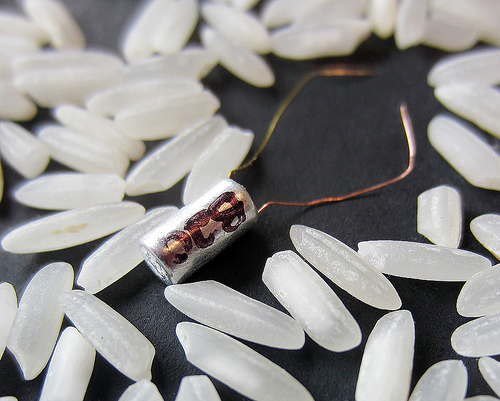Hopefully you won’t be subjected to a commercial prior to this 3 mins. 49 secs. video about the salmon and how artificial intelligence (AI) could make a difference in theirs and our continued survival,
Video caption: Wild Salmon Center is partnering with First Nations to pilot the Salmon Vision technology. (Credit: Olivia Leigh Nowak/Le Colibri Studio.)
An October 19, 2023 news item on phys.org announces this research, Note: Links have been removed,
Scientists and natural resource managers from Canadian First Nations, governments, academic institutions, and conservation organizations published the first results of a unique salmon population monitoring tool in Frontiers in Marine Science.
This groundbreaking new technology, dubbed “Salmon Vision,” combines artificial intelligence with age-old fishing weir technology. Early assessments show it to be remarkably adept at identifying and counting fish species, potentially enabling real-time salmon population monitoring for fisheries managers.
…
An October 19, 2023 Wild Salmon Center news release on EurekAlert, which originated the news item, provides more detail about the work,
“In recent years, we’ve seen the promise of underwater video technology to help us literally see salmon return to rivers,” says lead author Dr. Will Atlas, Senior Watershed Scientist with the Portland-based Wild Salmon Center. “That dovetails with what many of our First Nations partners are telling us: that we need to automate fish counting to make informed decisions while salmon are still running.”
The Salmon Vision pilot study annotates more than 500,000 individual video frames captured at two Indigenous-run fish counting weirs on the Kitwanga and Bear Rivers of B.C.’s Central Coast.
The first-of-its-kind deep learning computer model, developed in data partnership with the Gitanyow Fisheries Authority and Skeena Fisheries Commission, shows promising accuracy in identifying salmon species. It yielded mean average precision rates of 67.6 percent in tracking 12 different fish species passing through custom fish-counting boxes at the two weirs, with scores surpassing 90 and 80 percent for coho and sockeye salmon: two of the principal fish species targeted by First Nations, commercial, and recreational fishers.
“When we envisioned providing fast grants for projects focused on Indigenous futurism and climate resilience, this is the type of project that we hoped would come our way,” says Dr. Keolu Fox, a professor at the University of California-San Diego, and one of several reviewers in an early crowdfunding round for the development of Salmon Vision.
Collaborators on the model, funded by the British Columbia Salmon Recovery and Innovation Fund, include researchers and fisheries managers with Simon Fraser University and Douglas College computing sciences, the Pacific Salmon Foundation, Gitanyow Fisheries Authority, and the Skeena Fisheries Commission. Following these exciting early results, the next step is to expand the model with partner First Nations into a half-dozen new watersheds on B.C.’s North and Central Coast.
Real-time data on salmon returns is critical on several fronts. According to Dr. Atlas, many fisheries in British Columbia have been data-poor for decades. That leaves fisheries managers to base harvest numbers on early-season catch data, rather than the true number of salmon returning. Meanwhile, changing weather patterns, stream flows, and ocean conditions are creating more variable salmon returns: uncertainty that compounds the ongoing risks of overfishing already-vulnerable populations.
“Without real-time data on salmon returns, it’s extremely difficult to build climate-smart, responsive fisheries,” says Dr. Atlas. “Salmon Vision data collection and analysis can fill that information gap.”
It’s a tool that he says will be invaluable to First Nation fisheries managers and other organizations both at the decision-making table—in providing better information to manage conservation risks and fishing opportunities—and in remote rivers across salmon country, where on-the-ground data collection is challenging and costly.
The Salmon Vision team is implementing automated counting on a trial basis in several rivers around the B.C. North and Central Coasts in 2023. The goal is to provide reliable real-time count data by 2024.
This October 18, 2023 article by Ramona DeNies for the Wild Salmon Center (WSC) is nicely written although it does cover some of the same material seen in the news release, Note: A link has been removed,
Right now, in rivers across British Columbia’s Central Coast, we don’t know how many salmon are actually returning. At least, not until fishing seasons are over.
And yet, fisheries managers still have to make decisions. They have to make forecasts, modeled on data from the past. They have to set harvest targets for commercial and recreational fisheries. And increasingly, they have to make the call on emergency closures, when things start looking grim.
“On the north and central coast of BC, we’ve seen really wildly variable returns of salmon over the last decade,” says Dr. Will Atlas, Wild Salmon Center Senior Watershed Scientist. “With accelerating climate change, every year is unprecedented now. Yet from a fisheries management perspective, we’re still going into most seasons assuming that this year will look like the past.”
One answer, Dr. Atlas says, is “Salmon Vision.” Results from this first-of-its-kind technology—developed by WSC in data partnership with the Gitanyow Fisheries Authority and Skeena Fisheries Commission—were recently published in Frontiers in Marine Science.
…
There are embedded images in DeNies’ October 18, 2023 article; it’s where I found the video.
Here’s a link to and a citation for the paper,
Wild salmon enumeration and monitoring using deep learning empowered detection and tracking by William I. Atlas, Sami Ma, Yi Ching Chou, Katrina Connors, Daniel Scurfield, Brandon Nam, Xiaoqiang Ma, Mark Cleveland, Janvier Doire, Jonathan W. Moore, Ryan Shea, Jiangchuan Liu. Front. Mar. Sci., 20 September 2023 Volume 10 – 2023 DOI: https://doi.org/10.3389/fmars.2023.1200408
This paper appears to be open access.
![AquaBounty's salmon (background) has been genetically modified to grow bigger and faster than a conventional Atlantic salmon of the same age (foreground.) Courtesy of AquaBounty Technologies, Inc. [downloaded from http://www.npr.org/sections/thesalt/2015/06/24/413755699/genetically-modified-salmon-coming-to-a-river-near-you]](http://www.frogheart.ca/wp-content/uploads/2015/12/GeneticallyModifiedSalmon.jpg)
